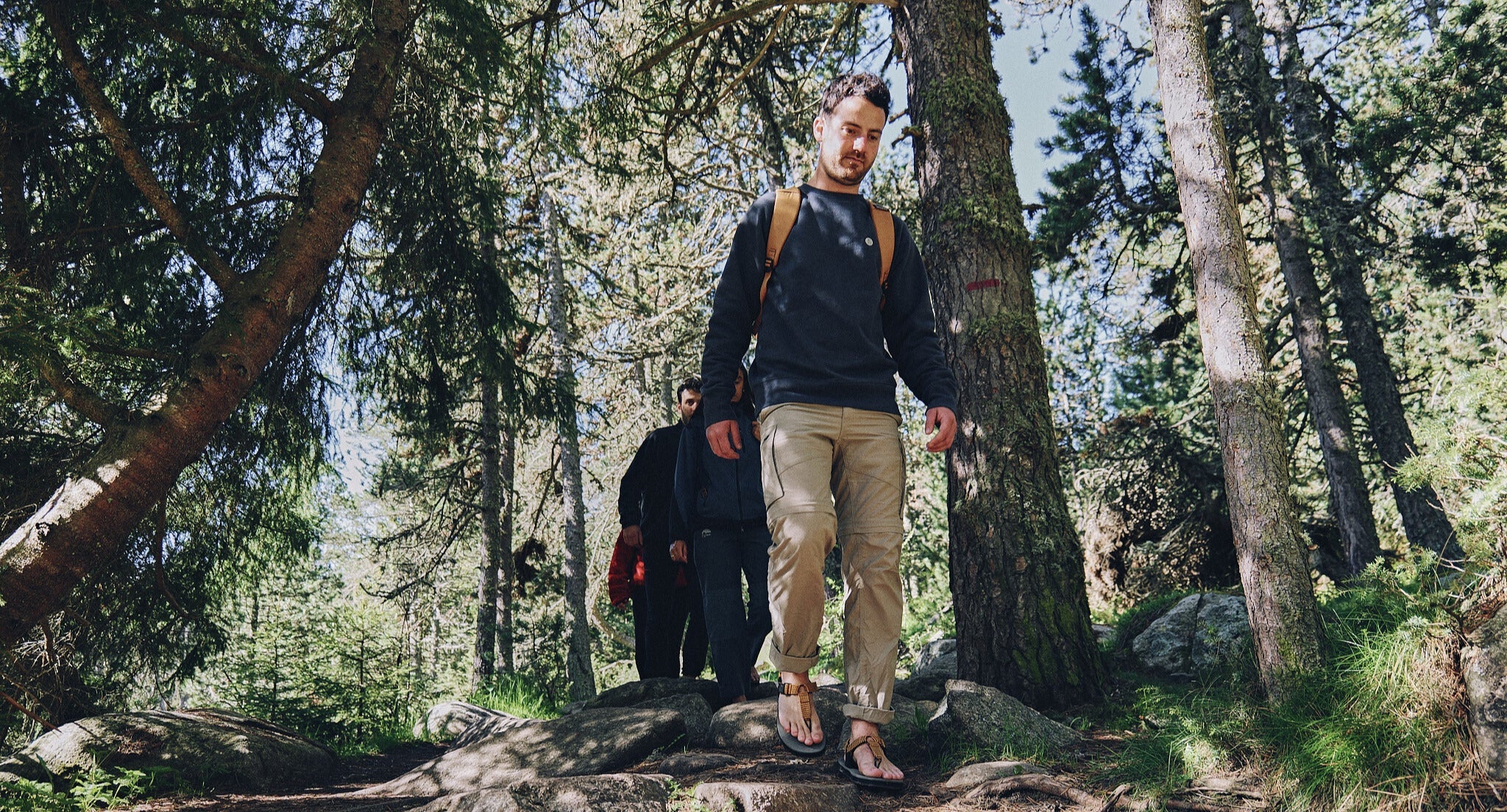Hiking the Pyrenees in hiking sandals is no longer a rarity: more and more hikers are choosing them for their lightness and comfort. At RRAT's Outdoor, we'll tell you how to plan your trip, the best routes, and everything you need to make the most of this experience.
Advantages of hiking the Pyrenees in hiking sandals
Walking in mountain-specific sandals is very different from walking in urban or beach sandals. These feature technical soles with good grip, cushioned insoles to absorb impacts, and adjustment systems that keep your foot secure even on uneven terrain.
In the Pyrenees, wearing hiking sandals means less weight with each step, cooler feet on hot days, and the freedom to cross rivers or ponds without worrying about drying out.
In addition, direct contact with air helps prevent excessive sweating and blisters caused by moisture, a common problem on long treks.
The best time to go trekking in sandals
The ideal time to hike the Pyrenees in hiking sandals is from June to September. During these months, most trails below 2,500 meters are snow-free, and temperatures are comfortable for walking in open-toed shoes.
July and August offer more stable days, but also more crowded weather; June and September are perfect for those looking for less crowded routes.
Remember that it's always important to check the weather forecast and avoid areas with snowdrifts or technical passes if you're wearing open-toed shoes.
Recommended “sandal-friendly” routes
Although not all high-mountain trails are suitable for sandals, the Pyrenees offer many options that combine good road surfaces, moderate gradients, and spectacular scenery. Here are some ideas:
- Ordesa Valley and Monte Perdido: trails such as the Faja de Pelay or the Pradera–Circo de Soaso, with stable terrain and impressive views.
- Benasque Valley: routes to the Estos refuge or the Batisielles lake, with stretches along rivers perfect for cooling off.
- Aigüestortes and Sant Maurici Lake: paths over granite slabs, walkways and alpine meadows.
- Vall de Núria: itineraries such as the Camí Vell from Queralbs or the Fontalba circular.
For these routes, we recommend checking out RRAT's Outdoor hiking sandals , equipped with Vibram soles for all types of terrain.
And we can't forget to choose well-marked trails, avoid exposed ridges, and always have a plan B in case of sudden changes in the weather.
Tips for walking safely in sandals in the mountains
Trekking in the Pyrenees with sandals requires some adaptation. Therefore, if you're not used to this type of footwear on difficult terrain, we recommend starting with short hikes to get your feet and ankles used to them.
Without forgetting to adjust the straps well, wear technical socks (we recommend the Vibram 5TOE ) if there is a risk of chafing and maintain a stable stride on long descents are key habits.
For wading rivers, it's best to face the current, using walking sticks for balance, and taking advantage of the quick-draining footwear.
RRAT's Y-Mountain, the best option for difficult terrain
If you're looking for a model that meets all the necessary features to enjoy the Pyrenees, RRAT's Y-Mountain hiking sandals are an excellent choice.
They combine a high-performance, grippy Vibram sole, dual-density cushioning, and a secure fit system that prevents unnecessary foot movement. Their design also allows them to be used on both mountain trails and more versatile adventure trips, offering the comfort and durability required in an environment like the Pyrenees.
Hiking the Pyrenees in hiking sandals is a different way to enjoy the high mountains: lighter, cooler, and, if you choose the right routes, just as safe as with boots.
Whether for a multi-day trek in the Pyrenees or a day trip, technical sandals allow you to experience nature more directly. With good planning and the right footwear, hiking sandals can become your new favorite way to explore these mountains.


